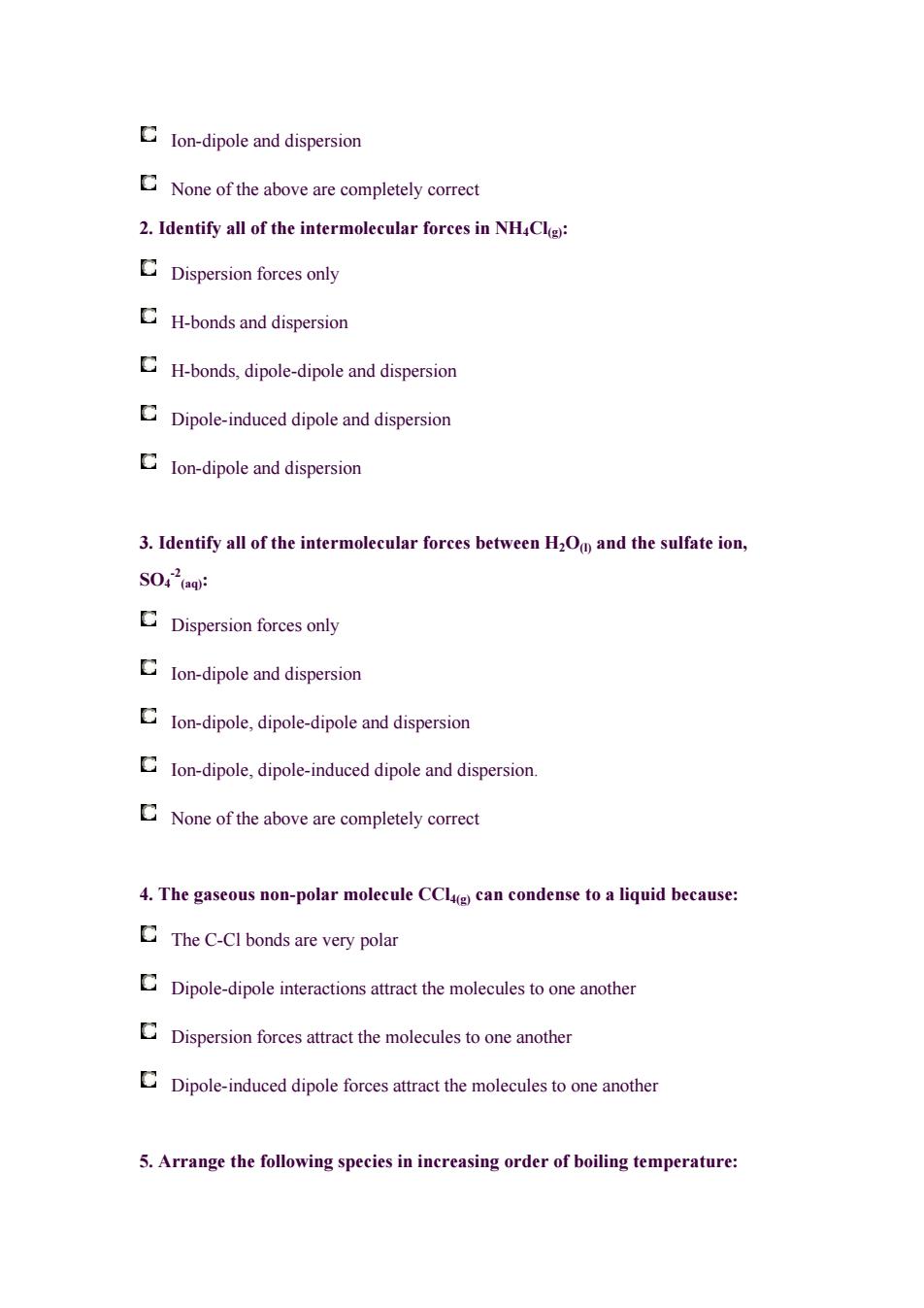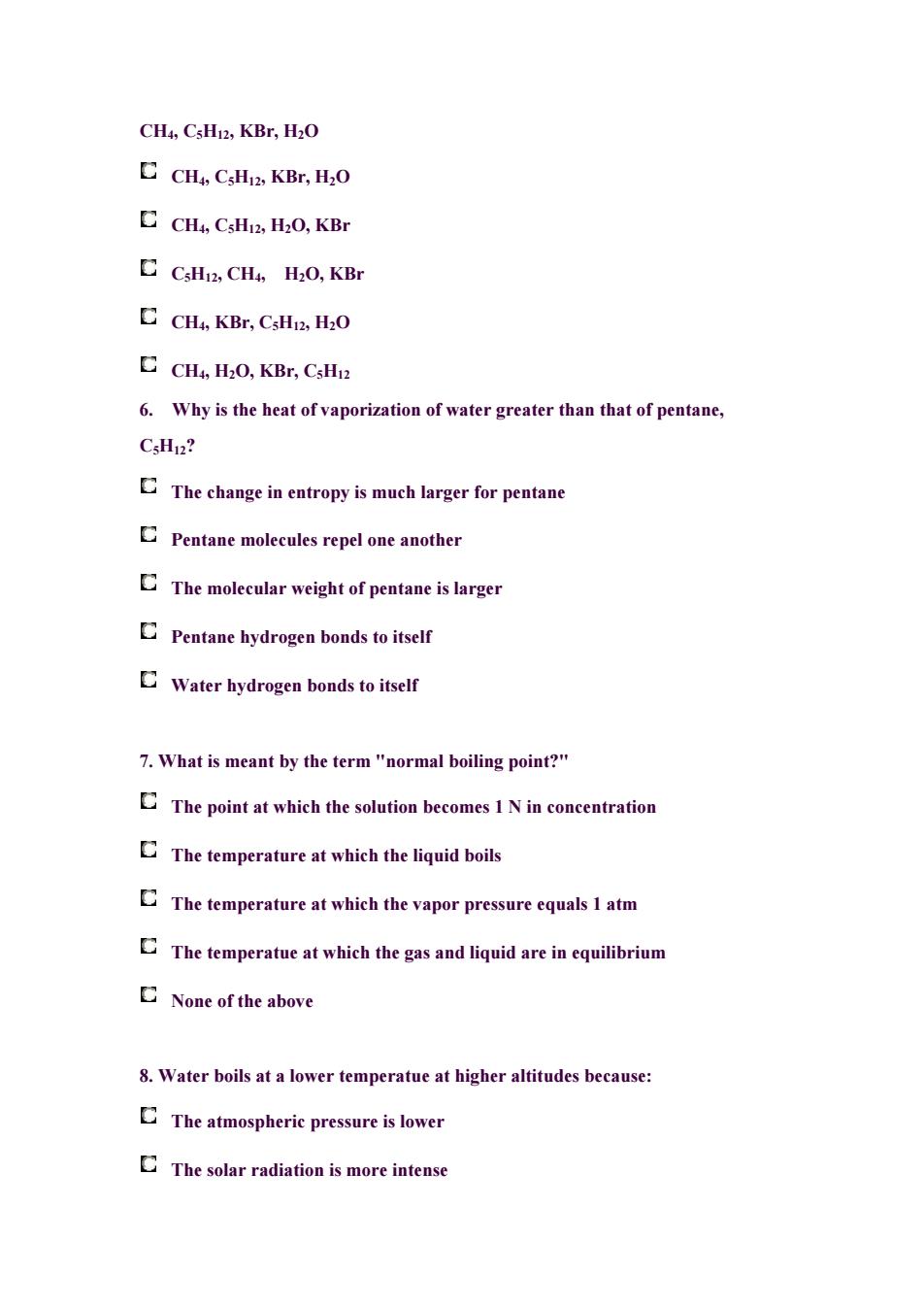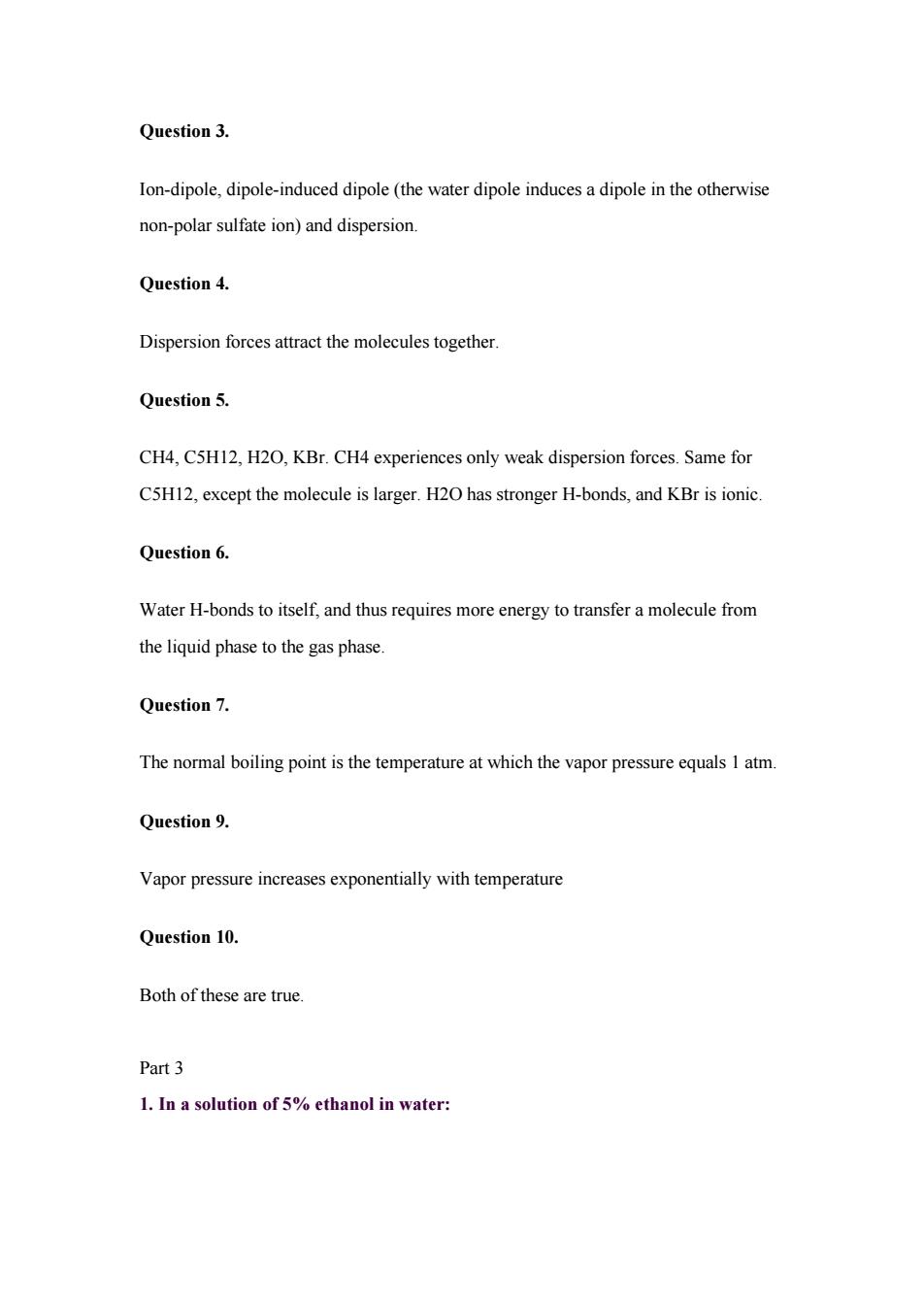
Chapter 10 Solid Structure Part 1 1.Explain what is meant by (a)a Schottky defect in CaCl2,and (b)a Frenkel defect in AgBr.(c)Suggest what effect doping crystals of AgCl with CdCl2 might have on the AgCl lattice structure. 2.Suggest why doping NiO with Li in air (or the presence ofO)leads to an increase in electrical conductivity,and comment on the dependence of this increase on the amount of lithium dopant. 3.Comment on the structural and compositional implications of(a)the Fe-deficiency of iron(II)oxide,and(b)the anion-excess nature of uranium(IV)oxide. 4.Give a brief outline of a typical CVD process and give examples of its use in the semiconductor industry. 5.(a)Describe the structure of lithium nitride and explain how it is able to function as a lithium ion conductor.The structures of LisP and LisAs are analogous to that of the nitride.How do you expect the degree of ionic character in these compounds to vary? (b)Epitaxial MgB2 films can be grown from B2H6 and Mg vapour at temperatures up to 1030 K.Explain the meaning of epitaxial'and state what particular properties the films possess Part2 1.Identify all of the intermolecular forces in HF Dipole-dipole only CH-bonds only H-bonds and dispersion
Chapter 10 Solid Structure Part 1 1. Explain what is meant by (a) a Schottky defect in CaCl2, and (b) a Frenkel defect in AgBr. (c) Suggest what effect doping crystals of AgCl with CdCl2 might have on the AgCl lattice structure. 2. Suggest why doping NiO with Li2O in air (or the presence of O2) leads to an increase in electrical conductivity, and comment on the dependence of this increase on the amount of lithium dopant. 3. Comment on the structural and compositional implications of (a) the Fe-deficiency of iron(II) oxide, and (b) the anion-excess nature of uranium(IV) oxide. 4. Give a brief outline of a typical CVD process and give examples of its use in the semiconductor industry. 5. (a) Describe the structure of lithium nitride and explain how it is able to function as a lithium ion conductor. The structures of Li3P and Li3As are analogous to that of the nitride. How do you expect the degree of ionic character in these compounds to vary? (b) Epitaxial MgB2 films can be grown from B2H6 and Mg vapour at temperatures up to 1030 K. Explain the meaning of ‘epitaxial’ and state what particular properties the films possess. Part 2 1. Identify all of the intermolecular forces in HF(g): Dipole - dipole only H-bonds only H-bonds and dispersion

Ion-dipole and dispersion None of the above are completely corret 2.Identify all of the intermolecular forces in NHCl: Dispersion forces only H-bonds and dispersion H-bonds.dipole-dipole and dispersion Dipole-nducedipandisprsion lon-dipole and dispersion 3.Identify all of the intermolecular forces between H2O and the sulfate ion, SO: Dispersion forces only Ion-ipol and dispersion Ion-dipole,dipole-dipole and dispersion on-ipeipdueipandisprsio None ofthe above are completely correct 4.The gaseous non-polar molecule CCl can condense to a liquid because The C-Clbonds are very polar Dipoiprahe moother Dispersion the Dipole-indued dipolforeart the moleculesnother 5.Arrange the following species in increasing order of boiling temperature:
Ion-dipole and dispersion None of the above are completely correct 2. Identify all of the intermolecular forces in NH4Cl(g): Dispersion forces only H-bonds and dispersion H-bonds, dipole-dipole and dispersion Dipole-induced dipole and dispersion Ion-dipole and dispersion 3. Identify all of the intermolecular forces between H2O(l) and the sulfate ion, SO4 -2 (aq): Dispersion forces only Ion-dipole and dispersion Ion-dipole, dipole-dipole and dispersion Ion-dipole, dipole-induced dipole and dispersion. None of the above are completely correct 4. The gaseous non-polar molecule CCl4(g) can condense to a liquid because: The C-Cl bonds are very polar Dipole-dipole interactions attract the molecules to one another Dispersion forces attract the molecules to one another Dipole-induced dipole forces attract the molecules to one another 5. Arrange the following species in increasing order of boiling temperature:

CH4,CsH12,KBr,H2O CH CsHz,KBr,H:0 CCH4 CsH12,H2O,KBr CsHn2,CH4,H2O,KBr CCH4,KBr,CsHi2,H2O 口CL,H,O,KBr,CsH2 6.Why is the heat of vaporization of water greater than that of pentane, CsHp2? The change in entropy is much larger for peatane Pentane molecules repel one another CThe molecular weight of pentane is larger Pentane hydrogen bonds to itself Water hydrogen bonds to itself 7.What is meant by the term"normal boiling point?" The point at which the solution becomes IN in The temperature at which the liquid boils The temperature at which the vapor pressure The temperatue at which the gas and liquid are inequrm None of the above 8.Water boils at a lower temperatue at higher altitudes because: The atmospheric pressure is lower The solar radiation is more intense
CH4, C5H12, KBr, H2O CH4, C5H12, KBr, H2O CH4, C5H12, H2O, KBr C5H12, CH4, H2O, KBr CH4, KBr, C5H12, H2O CH4, H2O, KBr, C5H12 6. Why is the heat of vaporization of water greater than that of pentane, C5H12? The change in entropy is much larger for pentane Pentane molecules repel one another The molecular weight of pentane is larger Pentane hydrogen bonds to itself Water hydrogen bonds to itself 7. What is meant by the term "normal boiling point?" The point at which the solution becomes 1 N in concentration The temperature at which the liquid boils The temperature at which the vapor pressure equals 1 atm The temperatue at which the gas and liquid are in equilibrium None of the above 8. Water boils at a lower temperatue at higher altitudes because: The atmospheric pressure is lower The solar radiation is more intense

CThe clouds are lower Liquid water is less denseat hig atitude None of the above 9.The Clausius Clapeyron equation predicts: Vapor pressure is a linear function of temperature Vapor pressure decreases exponetially with temperature Vapor pressure inereases exponentially with temperature Vapor pressure is not a function of temperature 10.The entropy of vaporization for most liquids is approximately 88 JKmo because: The ratio does no vary much from one liquid toanother The difference in density from the liquid to the gas is about the same for most liquids CBoth of the above Neither of the above Answer: Question I. HF experiences H-bonds and dispersion forces. Question 2. H-bonds(H is bound to N).dipole-dipole(the N-CI bond is also polar)and dispersion forces
The clouds are lower Liquid water is less dense at high altitude None of the above 9. The Clausius Clapeyron equation predicts: Vapor pressure is a linear function of temperature Vapor pressure increases logarithmically with temperature Vapor pressure decreases exponetially with temperature Vapor pressure increases exponentially with temperature Vapor pressure is not a function of temperature 10. The entropy of vaporization for most liquids is approximately 88 J K-1 mol-1 because: The ratio H/T b does not vary much from one liquid to another The difference in density from the liquid to the gas is about the same for most liquids Both of the above Neither of the above Answer: Question 1. HF experiences H-bonds and dispersion forces. Question 2. H-bonds (H is bound to N), dipole-dipole (the N-Cl bond is also polar) and dispersion forces

Question 3. Ion-dipole,dipole-induced dipole (the water dipole induces a dipole in the otherwise non-polar sulfate ion)and dispersion. Question 4 Dispersion forces attract the molecules together. Question 5. CH4,C5H12,H20,KBr.CH4 experiences only weak dispersion forces.Same for C5H12,except the molecule is larger.H2O has stronger H-bonds,and KBr is ioni Question 6. Water H-bonds to itself,and thus requires more energy to transfer a molecule from the liquid phase to the gas phase. Question 7. The normal boiling point is the temperature at which the vapor pressure equals 1 atm. Question 9. Vapor pressure increases exponentially with temperature Question 10. Both of these are true. Part3 1.In a solution of 5%ethanol in water
Question 3. Ion-dipole, dipole-induced dipole (the water dipole induces a dipole in the otherwise non-polar sulfate ion) and dispersion. Question 4. Dispersion forces attract the molecules together. Question 5. CH4, C5H12, H2O, KBr. CH4 experiences only weak dispersion forces. Same for C5H12, except the molecule is larger. H2O has stronger H-bonds, and KBr is ionic. Question 6. Water H-bonds to itself, and thus requires more energy to transfer a molecule from the liquid phase to the gas phase. Question 7. The normal boiling point is the temperature at which the vapor pressure equals 1 atm. Question 9. Vapor pressure increases exponentially with temperature Question 10. Both of these are true. Part 3 1. In a solution of 5% ethanol in water: